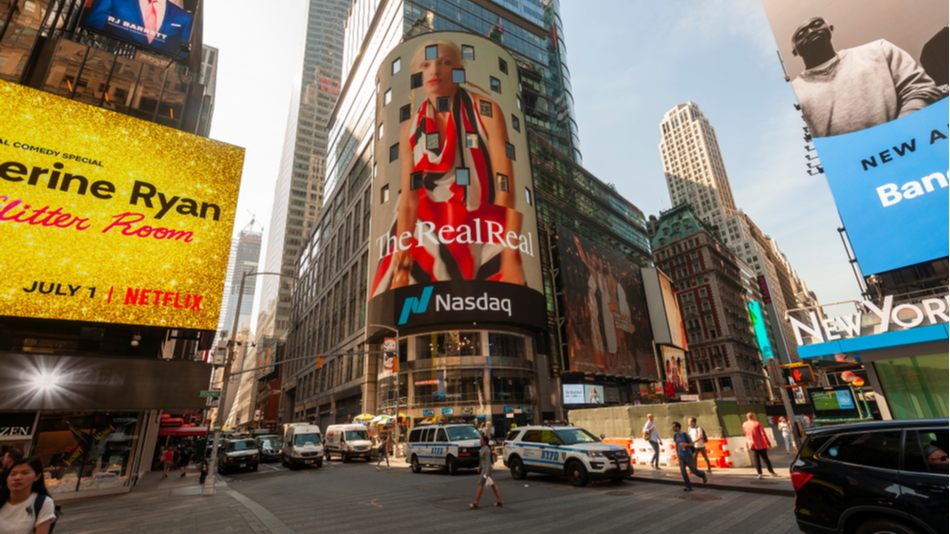We’ve come a long way since 2012, when Nordstrom selling secondhand shoes at Rack stores was the scandal du jour in the retail industry. In light of increasing environmental concerns, retail is evolving into what is called a “circular economy”–– an economy that doesn’t depend on finite resources or need to create waste to stay up-and-running.
In retail, this means consumers are favoring sustainable sourcing models, such as: apparel subscription services, eco-friendly production processes, and the resale market. Thrifting has infiltrated the mainstream and Fortune reports that the resale industry will soon replace fast-fashion altogether––a fact that’s not being lost on retailers, an increasing number of which are bringing consignment or resale operations in-house.
This article will share why retailers need to capitalize on this opportunity and reveals how some forward-thinking retailers are beginning to do just that.
Generation Z Favors Thrift Over Big Brands
Generation Z is a driving factor in the resale market. Gen Z consumers are dedicated to reducing the amount of waste that they create. Since Gen Z-ers are naturally rebellious, any brand that gets too big feels like “the man” to them. Gen Z isn’t interested in doing business with bureaucratic organizations––they’re more concerned with preserving the planet they live on through the cultivation of circular economies.
The numbers speak for themselves. A whopping 74% of 18-29-year-olds prefer to purchase from sustainable brands… and shopping within the resale market is the perfect solution. Perhaps this is why one in three Gen Z consumers are expected to buy secondhand this year alone, and the trend shows no signs of slowing down. The resale market is perfectly positioned to give Gen Z consumers the sustainability they demand, with the potential for originality and fresh fashions that they so desperately want. Keep an eye on how retailers continue to implement resale to meet the (increasingly complex) needs of next-gen consumers.
The Consignment Industry Gets RealReal Mainstream
The ownership model is also changing as the circular economy continues to influence the luxury goods sector. Consignment shopping no longer carries the class stigma it once did. These days wannabe luxury consumers can dip their toes into luxury by purchasing goods secondhand––as opposed to buying off-price diffusion lines, which are often made with cheap materials and don’t have the true luxury feel.
The circular economy is becoming a big moneymaker for luxury retailers, and RetailDive reports that operating margins for rental, subscription rental and re-commerce are 61%, 30% and 39%, respectively. Shoes and accessories comprise a big chunk of this market share. Suddenly, Louis Vitton shoes and Birkin handbags are accessible to a new demographic of consumer. In fact, 33% of luxury consumers report that they’d buy more from their retailers-of-choice if secondhand options were offered. The RealReal is the leading online luxury consignment retailer. If their growth is any indication of the market as a whole, it’s safe to say that secondhand luxury goods is a sector that will continue to grow––MarketWatch reports that the RealReal processed 1.6 million orders in last year, and it had up to 42% year-over-year growth since 2018.
Macy’s and J.C. Penney Bring Thrift Stores In-House
Even department stores can’t ignore the resale market boom. Macy’s is getting their piece of the resale market pie by rolling out 500 square foot brick-and-mortar ThredUp thrift stores in a 40-store pilot program, and J.C. Penney is following suit. But will bringing ThredUp in-house result in lasting traffic for both retailers, or will it just bring about a temporary boom in customers that will quickly fizzle out?
If cross-merchandising isn’t executed correctly, the ThredUp pilot rollouts could be similar to when J.C. Penney brought Sephora in-house and failed to translate the foot traffic to Sephora into in-store sales. A strong promotional strategy and a plan to get customers to continue exploring the stores will be necessary for this rollout to have lasting benefits for both retailers. With that said, any movement towards legacy retailers implementing circular economy-thinking can bring them closer to courting the next-gen, forward-thinking consumers they need to attract to remain relevant.
Neiman Marcus Makes a Big Acquisition
Neiman Marcus recently joined Macy’s and J.C. Penney, becoming one of the first fashion retailers to bring a secondhand retail operation in-house with its acquisition of Fashionphile––the luxury consignment retailer with an online and physical retail presence. Shoppers can now drop off luxury items at Neiman Marcus stores to be sold at the retailer, suddenly making Neiman Marcus a pioneer in both relationship-building and the resale market.
The move won’t be lost on next-gen consumers, as long as Neiman Marcus gets more proactive in promoting its recent advances towards becoming a circular economy. The luxury destination might even have an advantage over Macy’s and J.C. Penney, since Fashionphile has already established itself as a brick-and-mortar retail destination. This is exactly the type of omnichannel, sustainable retail initiative that will pave the way for the store of the future.
Bringing It All Together
Retailers like Macy’s, J.C. Penney, and Neiman Marcus are proving that they are willing to respond to trends ahead of the competition by bringing elements of the circular economy into their stores and onto their websites. To execute this type of merge successfully, however, retailers need the ability to track and consolidate inventory from multiple channels to ensure unique apparel items don’t get lost in the fray. On average, retailers lose out on 3% to 5% of total sales due to persistent in-store issues. But identifying where the issues reside within each of the diverse retail business models can be a challenge that’s nearly insurmountable for retailers without the right technology.
Fortunately, artificial intelligence applications can help retailers identify problem areas within their organization. CB4 is a sophisticated AI platform that helps store managers discover where they can optimize unique inventory items for greater accessibility. Learn how CB4 uses AI to help retailers capitalize on sales opportunities at every store in their chain.



